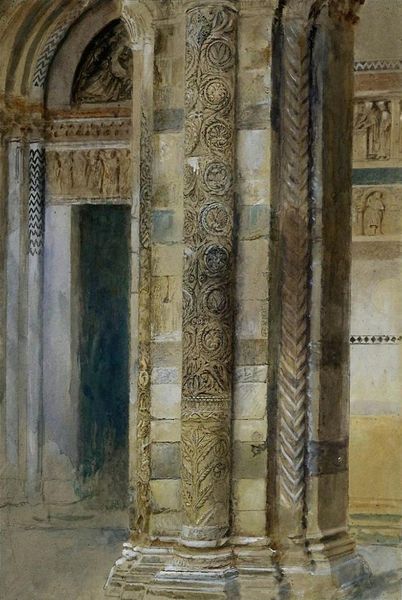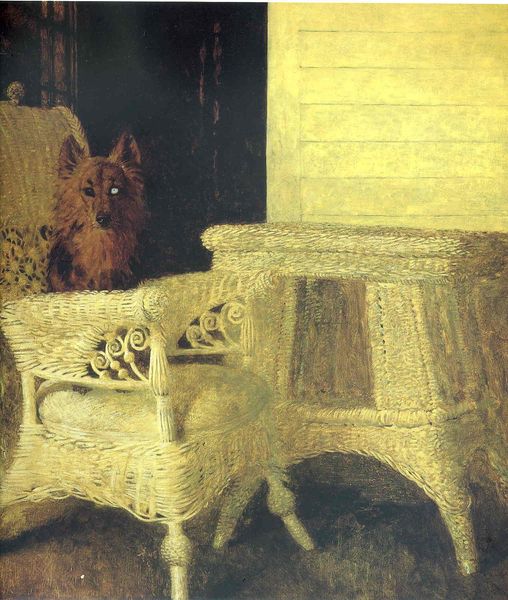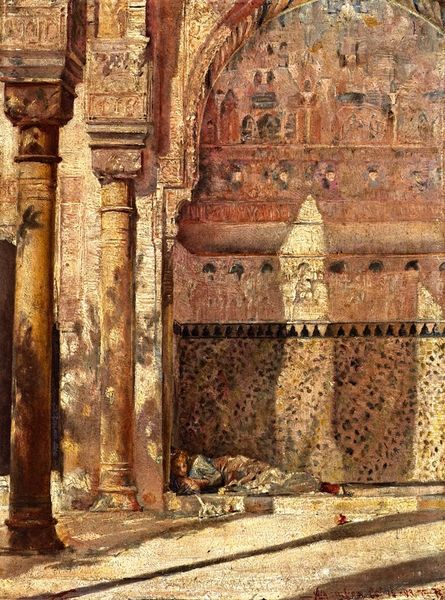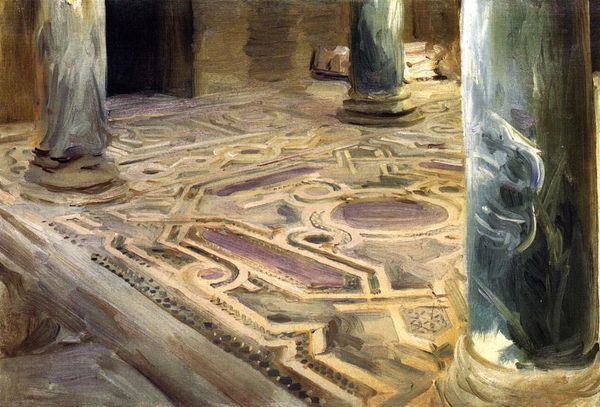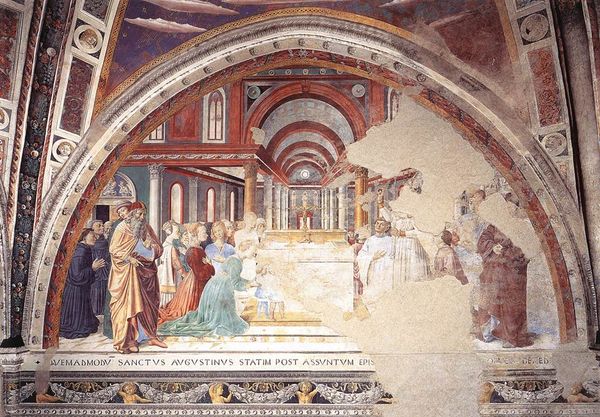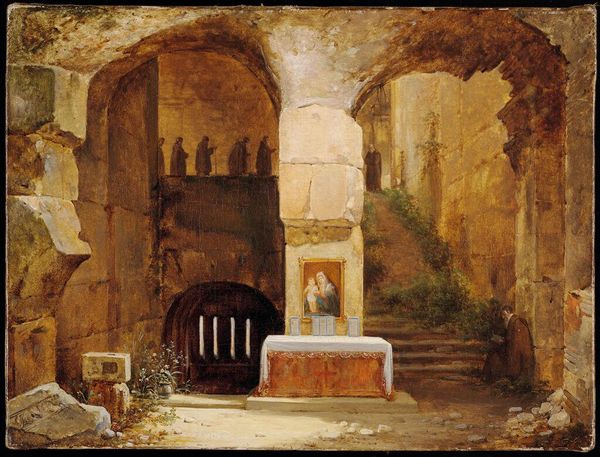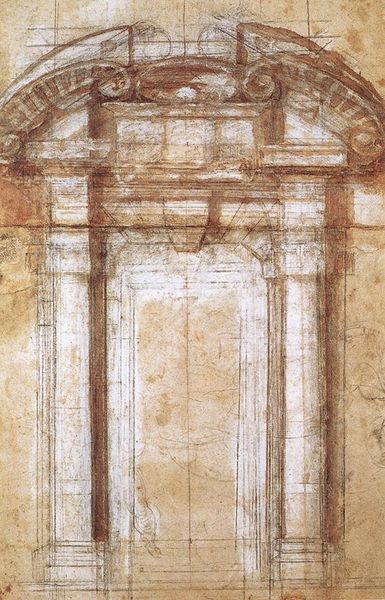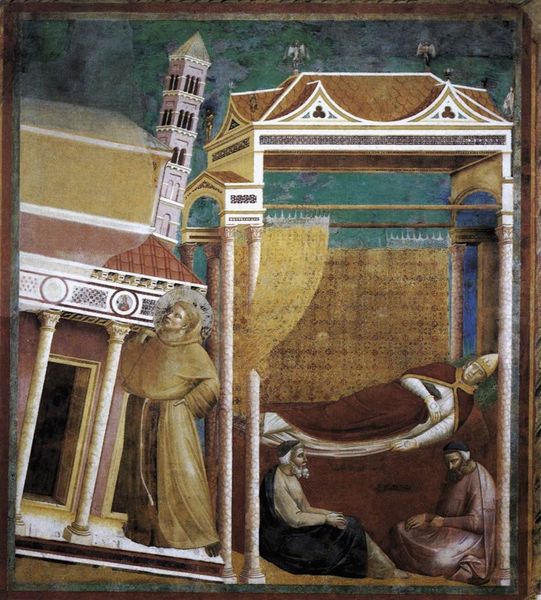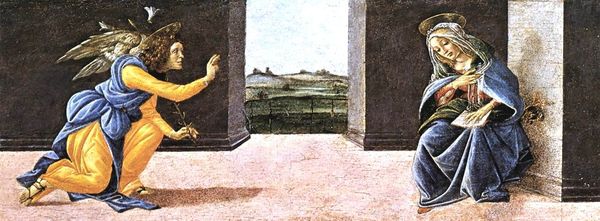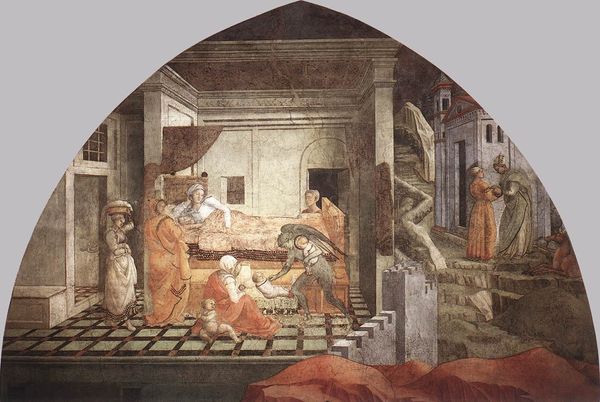
tempera, painting, fresco
#
portrait
#
narrative-art
#
tempera
#
painting
#
house
#
figuration
#
fresco
#
oil painting
#
christianity
#
history-painting
#
italian-renaissance
#
mixed media
#
building
#
angel
Dimensions: 243 x 550 cm
Copyright: Public domain
Editor: Here we have Botticelli's "Annunciation," from 1481. It looks like tempera on wood transferred to canvas. It has a clear Renaissance style and feels deeply religious. How do you interpret this work? Curator: The materials themselves offer an entry point. Tempera, with its reliance on egg yolk as a binder, speaks to a pre-industrial mode of production, doesn't it? Think of the guilds, the apprenticeships, the laborious grinding of pigments. This isn't simply about depicting a religious scene; it’s about a very specific type of skilled labor embedded in a precise socio-economic context. Editor: So, the medium is as significant as the message? Curator: Precisely. Look at the underdrawing, visible in areas of damage. That initial sketch dictated everything, showcasing design principles prized by the patron. Fresco and tempera demand rapid execution to become one with their support; it wasn’t simply made—it became embedded in that architectural reality and defined its context. We can learn a lot by paying attention to these choices. Editor: The painting depicts this very important moment in Christian belief, the Angel Gabriel delivering the news to Mary of Jesus's arrival to Earth. But I am more interested in the labour process required to create the support on which the fresco has been realized; it involved teamwork! Curator: Indeed! And let’s not forget the cultural value assigned to these materials, which also defined who consumed art: think pigments derived from Lapis Lazuli which make Our Lady's mantle shine! The value isn't simply artistic; it's intertwined with commerce and power. Editor: I never thought about it that way, about the materials used reflecting society at the time. Now I feel I am appreciating Botticelli’s "Annunciation" from a completely new perspective! Curator: And hopefully questioning our modern assumptions about what constitutes "art" versus "craft," given the emphasis on skilled handwork and material knowledge!
Comments
No comments
Be the first to comment and join the conversation on the ultimate creative platform.
